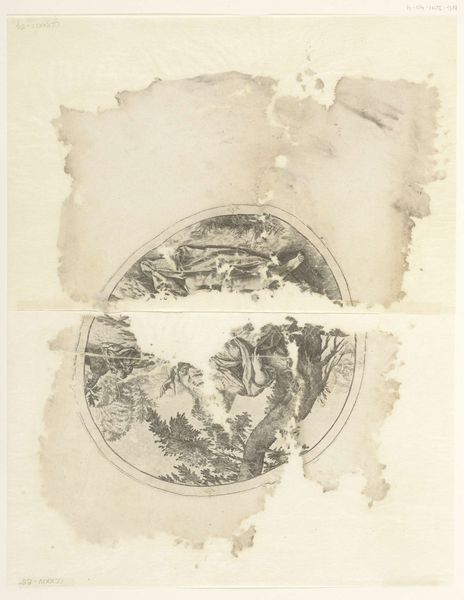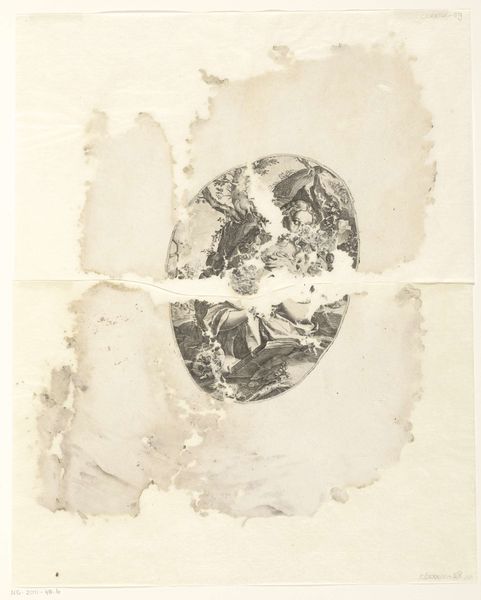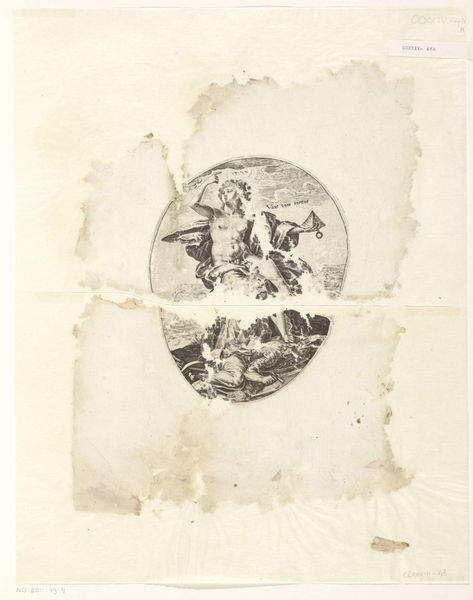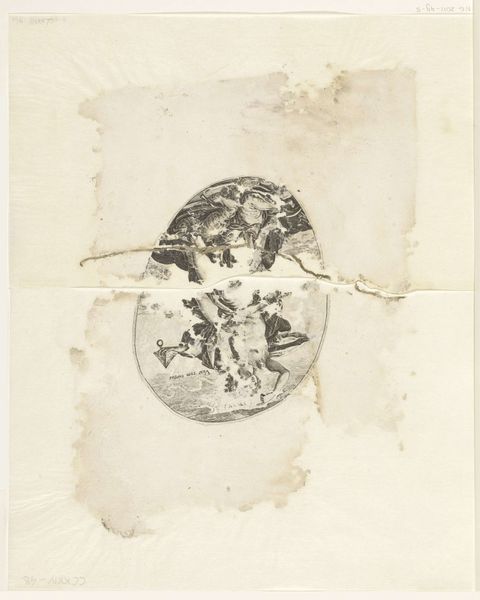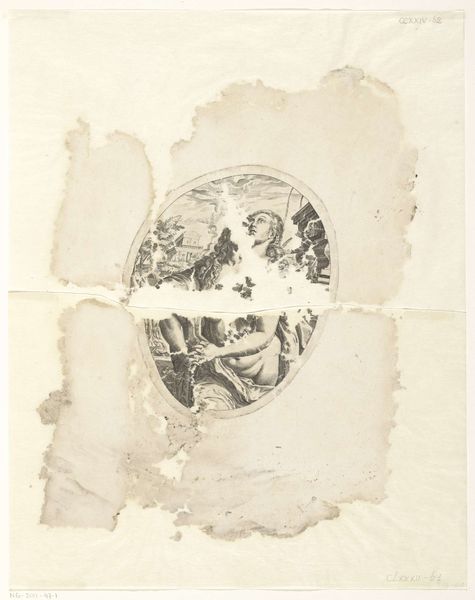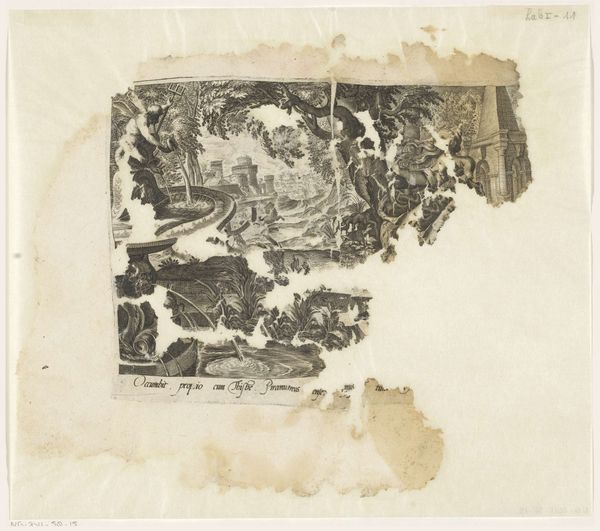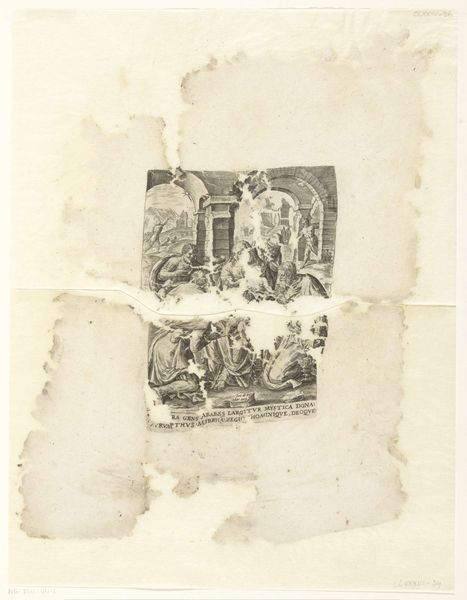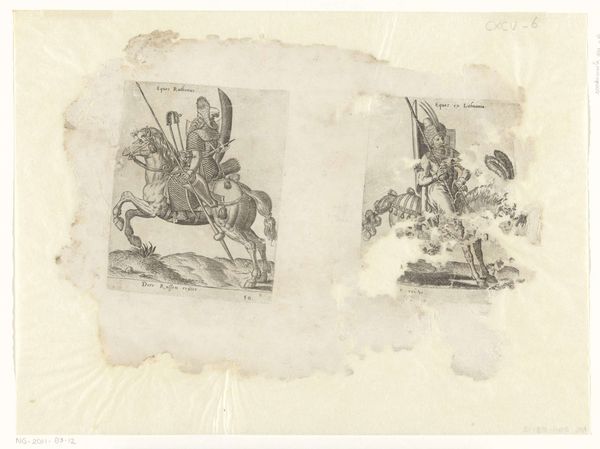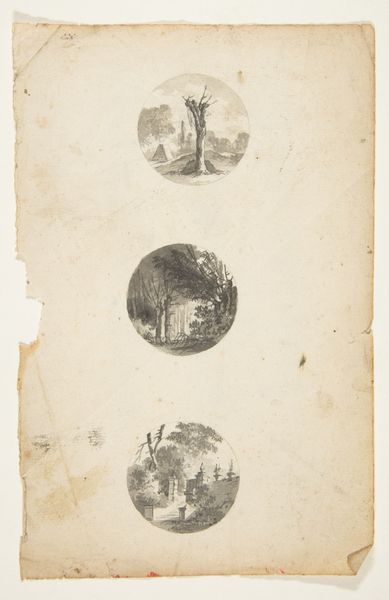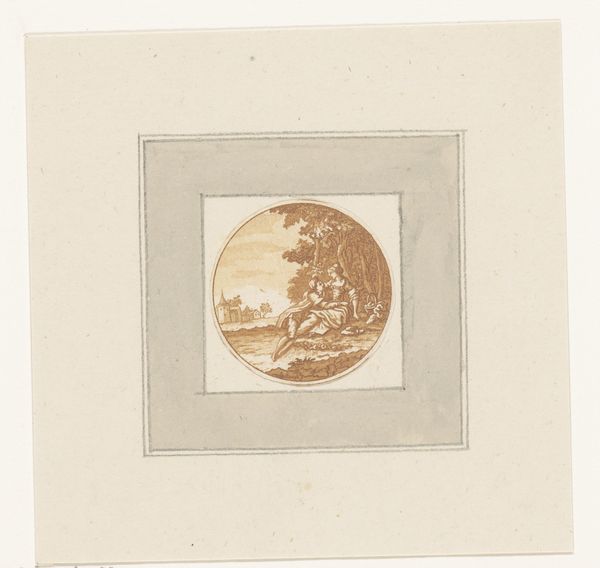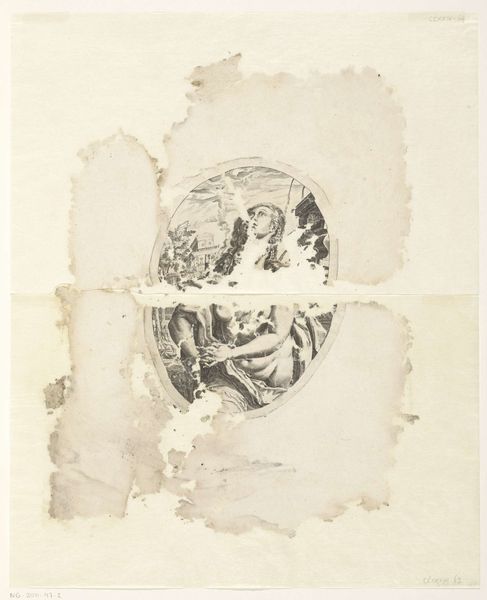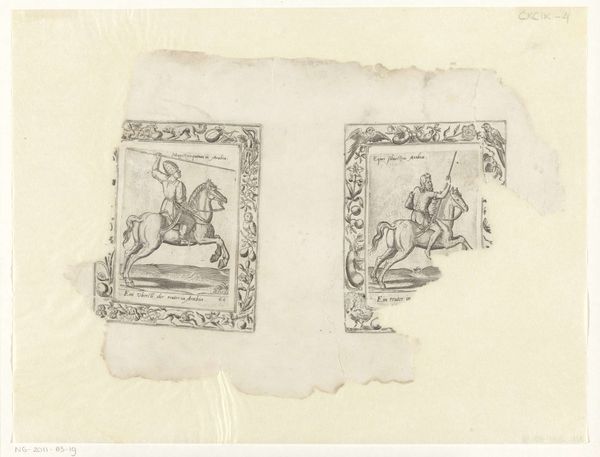
print, engraving
#
narrative-art
# print
#
old engraving style
#
figuration
#
northern-renaissance
#
engraving
Dimensions: height 390 mm, width 339 mm
Copyright: Rijks Museum: Open Domain
Curator: Let's turn our attention to this engraving, "Judah and Tamar" created between 1580 and 1596 by Hendrick Goltzius. Editor: The circular compositions create a sense of enclosed drama. There’s a stillness about the scene that almost feels…contemplative despite the intensity of the subject matter. Curator: Absolutely. Goltzius, a master of the Northern Renaissance, presents us here with two distinct scenes encased within these circular frames, a very classical compositional strategy. These are moments taken from the biblical narrative of Judah and Tamar. What interests me most is how this print underscores themes of deception and female agency in a patriarchal society. Tamar, scorned by her father-in-law, resorts to disguise and shrewdness to secure her lineage. Editor: Right, the disguise. It's not explicitly rendered but the symbolism speaks volumes. Consider the power of veiling as a tool and as cultural marker throughout history; how the adoption of such role or appearance carries layers of social and psychological impact, particularly for a woman in this era. Curator: And what's fascinating is the dualistic representation. In the upper roundel, Judah reclines, seemingly unaware. Below, we see the consequences of Tamar's actions. It’s a stark visual commentary on power and social standing. Editor: The details, especially within such an old engraving, provide much food for thought. Take for example the staff—a universal emblem of authority—which shifts hands and takes on added significance in their clandestine negotiation. And note also the treatment of the figures, which emphasizes weight and physical form. There’s real drama in the shadows, created solely through lines. Curator: I completely agree. By framing the scene in such a way, Goltzius compels us to analyze not just the narrative, but the social and political structures at play. Goltzius offers more than just the story, but also highlights this early intersectional narrative in which power structures and agency are blurred and questioned. Editor: Precisely. It's amazing how a seemingly simple image continues to resonate centuries later through enduring motifs that span across culture. Curator: Seeing this piece really encourages us to investigate not only the historical narrative, but also its present significance through an understanding of the underlying forces that remain relevant today. Editor: Indeed, these engravings possess remarkable potential for us to reflect deeply, urging a look into these symbolic frameworks, allowing an expanded consciousness and insight of both historical and present human realities.
Comments
No comments
Be the first to comment and join the conversation on the ultimate creative platform.
